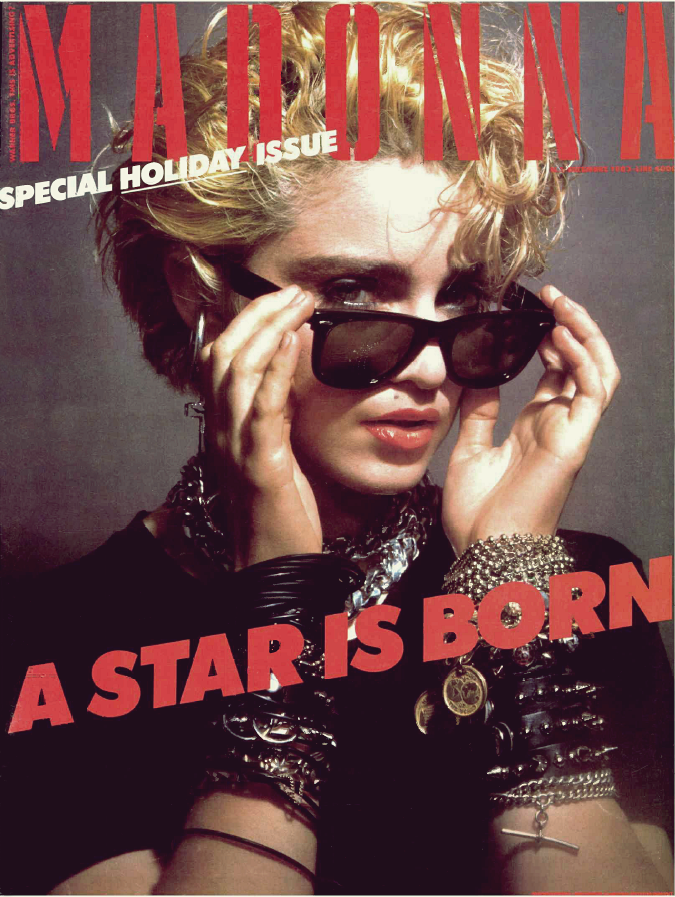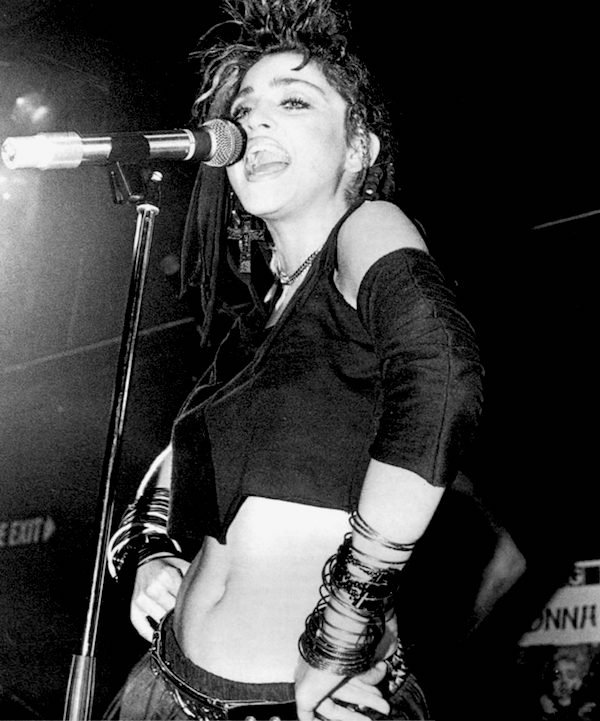Over the course of her five-decade career Madonna has become all things to all people, she is, of course, one of music’s greatest chameleons. But for her pure quintessence, argues Paul Flynn, you only have to look back upon her first clamation – the New York hip of her debut album. ‘Everybody get up and do your thing’ indeed…

There is some retrospective confusion, in my mind at least, as to what Madonna’s debut album is called. Is it ‘Madonna’s Madonna’? ‘The Madonna Album’? ‘Madonna’? Only adding to the befuddlement, two years after its original, perfect, July 1983 release it was reissued with a horrible new dust jacket, retitled ‘The First Album’, an act of basic derision that must surely have been cooked up around the Perspex boardroom table of an early-80s corporate record label. Is it, in fact, untitled? If so, why is Madonna’s name unfolded discreetly up one side of the sleeve in white, with the ‘o’ picked out in red, and then back down the other in black with the adjacent ‘o’ picked out, too?
That considered accentuation of the hole never felt accidental. The record opens with celestial sex – ‘Lucky Star’’s ‘shine your heavenly body tonight’ loop – and never really lets up. It ends in a steel-plated invocation for togetherness, ‘Everybody’. Maybe it was intended as The ‘O’ Record, patient zero for a firebrand new division of elite pop music, overseen by its inaugural new overlord, one spliced down the middle of Debbie Harry and Donna Summer, then built back up in the image of a new, unforeseen, emerging figurehead for end of the century womanhood. A fabulously photogenic face with a disco twist.
This is music with a foundation in the spritely boogie of some of the greatest nightclubs to ever exist, then translated neatly back to the mass market over the wireless. Unfurled in its wake is an unprecedented new heroine, one whose voice could summon both the demonic and angelic with every phrase. A sweet intersection of the seven deadly sins and act of contrition.
Ladies, Gentleman and those in between: Madonna. Voila. If its nomenclature remains a fastidious riddle, there is little doubt as to what the album represents. It is an announcement, a proclamation, a deceptively simple declaration of intent. The opening mission statement of the greatest pop star that ever lived. For the sake of expedience and convenience, let’s call it ‘The Madonna Album’, a strangely definitive epithet for a record that takes zero explanation, that leaves no room for misunderstanding, one that documents the last moment that the artist’s name reminded you first and foremost of the mother of Jesus Christ. By ‘Like a Virgin’, that time was long gone, honey.

‘The Madonna Album’ was the final battle-cry of innocence from pop’s emergent Joan of Arc. Its ambition is slyly woven through. It is a neatly clipped nine songs long. These songs’ primary concerns are love and dancing. They take in new wave, disco, electro flavours. They are aided and abetted by men who lived underground, for the night, disco citizens Mark Kamins and Jellybean Benitez, studio wizards Stephen Bray and Reggie Lucas, men who made their way into the light assisted by the last and greatest 20th century heroine.
When one of the nine songs fleetingly addresses heartache, on ‘I Know It’, with its useful, simple refrain, warning all of us from the bad-boys (‘I know you’re gonna take your love and run’), it is matter-of-fact acknowledgement that heartache should be folded and factored into the rhythm of living, if you want the best out of it. The Madonna of ‘The Madonna Album’ is an unusual combination of the learned, wise and new. She is studied in her lack of complication. The messaging of the record is bold, simple and pure. Her nine songs ripple with sex, in a completely oblivious manner, peaking with a bodily joint called ‘Physical Attraction’. There are some discretely hammy 80s motifs: the little southpaw jabs of sad saxophone on ‘I Know It’, the synthetic congas of ‘Holiday’. ‘Borderline’, on the other hand, is perfection.
Over the years, these glimpses into studio trickery now decades old have come to preserve the record in history, as reminders of a time for Madonna before everything else interrupted. They are flecked with lyrics reminding you to look her way. To spring her ‘Lucky Star’ into life. When she was just a girl, moving her flesh in nightclubs in a Keith Haring print Vivienne Westwood skirt, bracelets fashioned out of hoover bands. Madonna’s voice is introduced to the listener as an invitation to frisk, a funnel of joy. A reminder: she styled herself for the cover, turning up at art director Carin Goldberg’s Manhattan studio with a bag of clothes she thought might work.
Before this, the dance-pop album was an empty, cold bath. After it, you dipped your elbows in, felt the warmth and ran the tap five minutes longer, to maximise the embrace of its giddy, uncynical beautiful bubbles. From the opening number, ‘Lucky Star’, it is a record to point to a man, any man, in the middle of a dancefloor and nod in that approving manner which communicates with instant efficacy, we may not have met yet, but we’re almost certainly going home together tonight.

‘The Madonna Album’ is the artist’s most geographically specific. It isn’t just a New York record or a Lower Manhattan record, it is a record that carries with it some of the timeless glamour of the centre of the room at Danceteria, the space where New Order learned to embrace their groove and The Haçienda decided to shift its axis. It is the bedside at Seymour Stein’s hospital when he asked his A&R to sign Madonna to Sire on the back of a four-track demo. It’s her last vestiges of working-class record, still traced by the systemic values of hegemonic, pure, raw, feverish Saturday Night escape. It is a subway ride into the city across the river, as the lights spark up and everything seems, at last, possible.
For the lucky star at its centre, that promise turned out to be unusually true.
‘The Madonna Album’ is the go button pressed, the despatch button ignited, the firework lit on one of music history’s fundamental U-turns. It is a move from male to female, straight to gay, rock to pop. A thing of simple, electric, optimistic wonder.
Read: Madonna's greatest inspiration. Her enduring relationship with the dancefloor
Read: When Madonna played The Hacienda
Read: Madonna's 12 best dancefloor 12-inches
This article first appeared in issue seven of Disco Pogo.




.svg)



